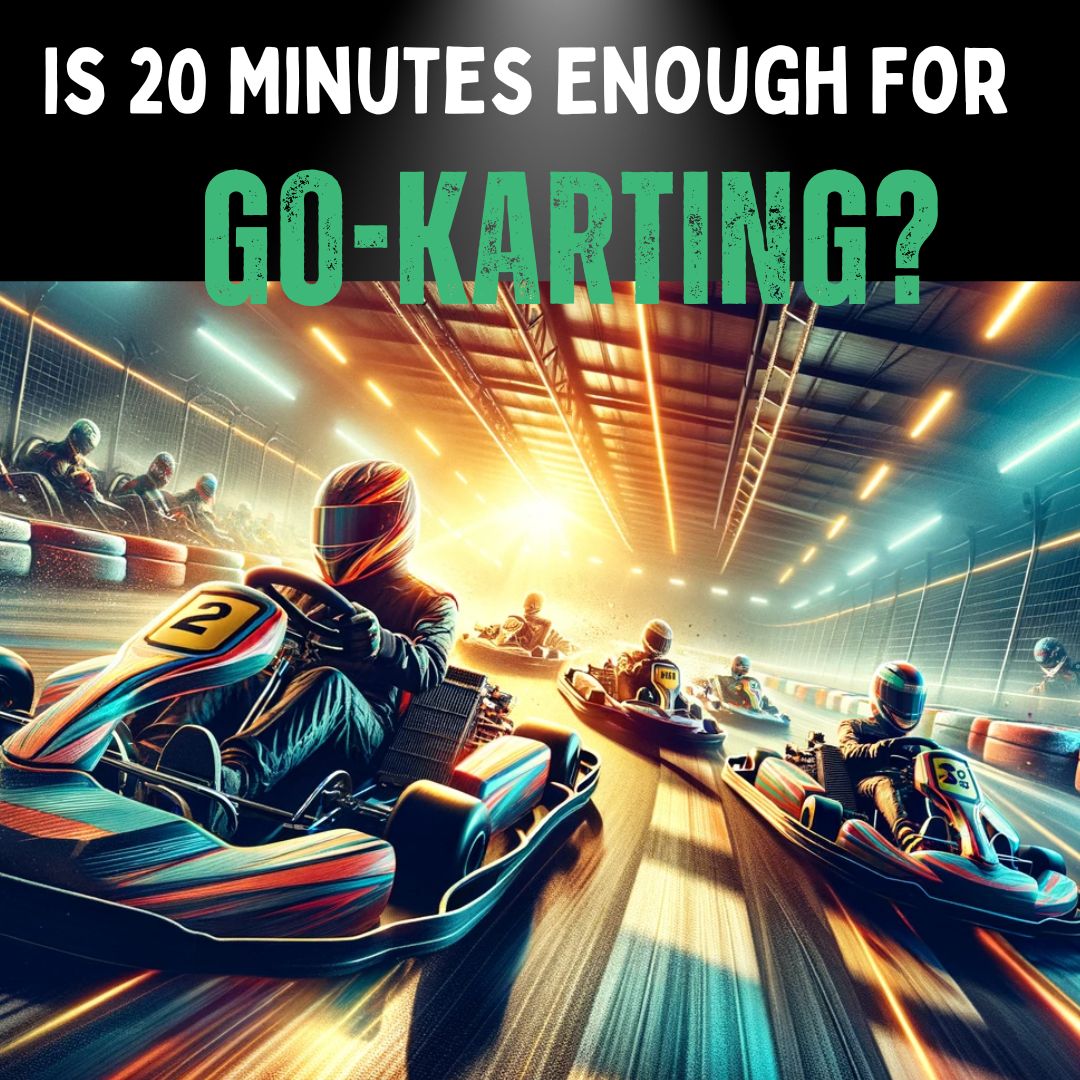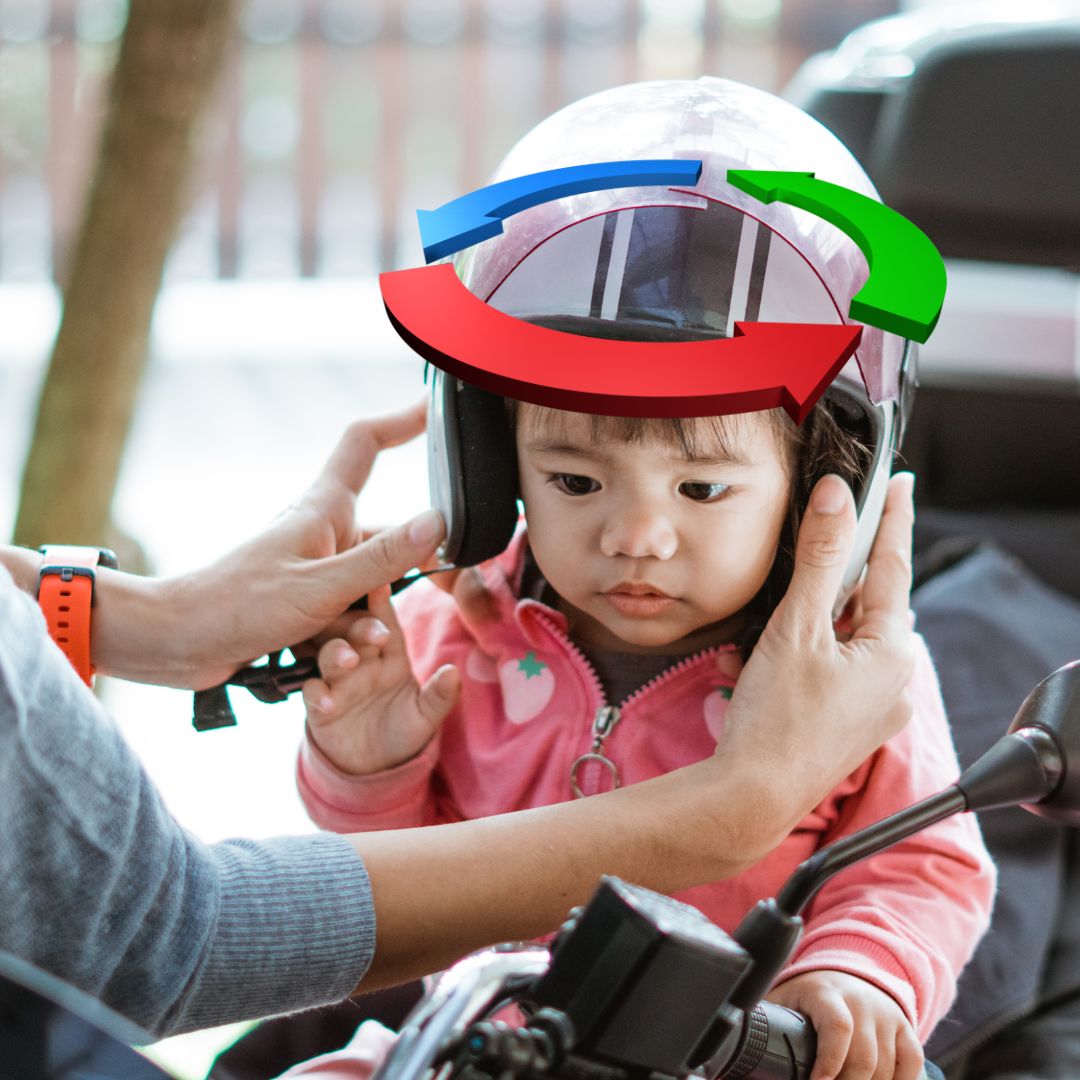
Updated: 16.05.25
Go-karting delivers a thrilling mix of speed, skill, and fun for kids and adults alike. But is a 20-minute session enough to capture the excitement?
Perfect for beginners, families, or those seeking a quick adrenaline rush, this duration offers plenty of action without overwhelming new racers.
This 2025 guide explores what to expect in a 20-minute go-karting session, tips to maximise your time, and how to stay safe on the track. Ready to race? Let’s dive in!
1. Is 20 Minutes Enough for Go-Karting?
Quick Answer
A 20-minute go-karting session is perfect for beginners, kids, or casual racers. It offers 8–12 laps to learn the track, feel the thrill, and build skills without fatigue. Affordable and intense, it’s ideal for a fun family outing or quick race.
2. What to Expect in a 20-Minute Session
A 20-minute go-karting session delivers a compact yet exhilarating experience, balancing learning and fun.
2.1 Session Breakdown
- Laps: Expect 8–12 laps on a typical 400–600m track, depending on speed and skill (1–2 minutes per lap).
- Learning Curve: Beginners spend 2–3 laps (5–7 minutes) getting comfortable with steering, braking, and track layout.
- Racing Time: The remaining 10–15 minutes allow for faster laps, overtaking, and improving technique.
- Kids’ Experience: Junior karts (50cc–100cc) are slower but safe, giving kids 8–10 laps to enjoy.
For experienced racers, 20 minutes is a sprint-style challenge to shave seconds off lap times.
2.2 Indoor vs. Outdoor Tracks
- Indoor Tracks: Controlled, weather-proof, and beginner-friendly (e.g., TeamSport venues). Shorter tracks (300–400m) mean more laps in 20 minutes.
- Outdoor Tracks: Longer (500–1,000m), faster, and more challenging (e.g., Daytona Motorsport). Fewer laps but a more authentic racing feel.
Related: Discover Karting Classes
Explore the world of karting classes for kids.
3. Benefits of a 20-Minute Session
Despite its brevity, a 20-minute session packs a punch:
- Physical Fitness: Improves reflexes, coordination, and arm/leg endurance. Steering and braking engage core muscles.
- Adrenaline Rush: Boosts alertness and delivers a natural high from speed and competition.
- Confidence Building: Mastering corners or improving lap times fosters a sense of achievement, especially for kids.
- Family Bonding: Fun for all ages, with junior karts for kids (7+) and adult karts for parents.
- Safety: Controlled environments with helmets and suits make it safer than other thrill sports.
Related: Physical Conditioning for Karting
4. Maximising Your 20-Minute Session
How to get the most out of your go-karting session.
To make every second count, follow these tips:
| Tip | Description |
|---|---|
| Set Goals | Aim to improve lap times, master a turn, or learn kart controls. |
| Adapt Quickly | Use first 2–3 laps to learn track layout and kart response. |
| Pace Yourself | Start steady, then increase speed as confidence grows. |
| Focus on Key Turns | Prioritise tricky corners to shave seconds off laps. |
5. Preparation Tips for Go-Karting
Good preparation enhances your 20-minute session, especially for beginners and kids.
5.1 Track Familiarisation
Study the track map (online or at the venue) to learn corners and straights. Watch other racers or walk the track if allowed to spot braking points.
5.2 Mastering Techniques
Key skills to practice:
- Racing Line: Follow the widest path through corners to maintain speed.
- Smooth Steering: Avoid jerky movements for better control.
- Braking: Brake before turns, not during, to keep momentum.
Related: Master Go-Kart Cornering
Pro tips for go-kart cornering.
5.3 Pre-Race Checklist
- Safety Gear: Ensure helmets, gloves, and suits fit snugly (provided by most tracks).
- Clothing: Wear closed-toe shoes and fitted clothes; avoid scarves or loose items.
- Mental Prep: Visualise the track and set a positive mindset to boost focus.
6. Common Mistakes to Avoid
Avoid these pitfalls to maximise your 20-minute session:
- Oversteering: Smooth steering prevents skids and maintains speed.
- Ignoring Racing Line: Stick to the optimal path to cut lap times.
- Wrong Braking: Brake early before corners, not in the middle, to avoid slowing down.
- Poor Spatial Awareness: Monitor nearby karts to prevent collisions.
Related: Can a Go-Kart Flip?
Learn about go-kart safety risks.
7. Safety and Track Etiquette
Safety and respect ensure a fun, secure experience for all racers.
7.1 Safety Priorities
- Gear Compliance: Wear provided helmets, gloves, and suits; check for snug fit.
- Track Rules: Follow flags (e.g., yellow for caution) and staff instructions.
- Kart Inspection: Report any kart issues (e.g., loose steering) before racing.
7.2 Karting Etiquette
- Respect Others: Keep a safe distance (1–2 kart lengths) from others; avoid bumping.
-
Fair Racing: Overtake cleanly on straights, not in tight corners.
- Listen to Marshals: Obey signals to ensure smooth racing.
7.3 Understanding Kart Mechanics
- Controls: Practice smooth accelerator and brake use to avoid spins.
- Weight Distribution: Lean slightly into turns to improve grip (e.g., shift body 5–10cm).
- Braking Response: Test brakes in the first lap to gauge sensitivity.
8. Finding Go-Karting Tracks Near You
Search “go-karting near me” on Google or Yelp to find local venues. Popular UK chains like TeamSport or Daytona Motorsport offer 20-minute sessions for kids and adults.
9. Session Costs
Costs for a 20-minute go-karting session vary by venue and kart type:
- Junior Sessions: £15–£30 per person (ages 7–12, 50cc–100cc karts).
- Adult Sessions: £20–£40 per person (200cc–270cc karts).
- Group Discounts: 10–20% off for 4+ people (e.g., family packages).
- Off-Peak Rates: £5–£10 cheaper on weekdays or mornings.
Prices include safety gear; some tracks charge £2–£5 for balaclavas or gloves.
10. Post-Session Reflection
After racing, reflect to improve future sessions:
- Assess Performance: Compare lap times (often provided by tracks) to your goals.
- Identify Weaknesses: Note tricky corners or braking errors to practice next time.
- Plan Ahead: Try a longer session (30–40 minutes) or a new track for more challenge.
11. Conclusion
A 20-minute go-karting session is perfect for beginners, kids, and casual racers, offering 8–12 laps of thrill, skill-building, and family fun.
With preparation, smart techniques, and a focus on safety, you’ll maximise every moment on the track.
Whether it’s your first race or a quick sprint, 20 minutes delivers an unforgettable experience. Ready to race? Explore RiiRoo’s kids’ go-karts for home-based fun!
Frequently Asked Questions
Is 20 minutes enough for go-karting?
Yes, 20 minutes is ideal for beginners or kids, offering 8–12 laps to learn the track, improve skills, and enjoy the thrill without fatigue.
Is go-karting a good family activity?
Absolutely! Tracks offer junior karts for kids (7+) and adult karts, with dual-seaters for younger children, making it fun for all ages.
What should I wear for go-karting?
Wear comfortable clothes, closed-toe shoes, and avoid loose items. Tracks provide helmets and suits; some charge £2–£5 for gloves or balaclavas.
What are the age and height restrictions for go-karting?
Most tracks require kids to be 7–8 years old and 120–130cm tall for junior karts. Adult karts often have a 140cm minimum. Check venue rules.
How much does a 20-minute go-karting session cost?
Junior sessions cost £15–£30; adult sessions are £20–£40. Group discounts (10–20%) and off-peak rates save £5–£10.
How do I book a go-karting session?
Book online via the track’s website, by phone, or in-person. Advance booking is recommended for groups; walk-ins may be available.
Additional Resources
- Go-Kart Cornering Tips
- Go-Kart Track Rules
- Kids’ Karting Etiquette
- Physical Prep for Karting
- Kids’ Go-Karts
Get in Touch 🚀
Loved our guide on 20-minute go-karting sessions? Ready to race with your kids?
Parents, we’re here for all your go-karting questions—tracks, tips, or karts! 🏎️
Visit RiiRoo.com, use our Live Chat, or email hello@riiroo.com to explore our kids’ go-karts!








Share:
Where Can I Drive My Go-kart Legally In The UK in 2025?
Go Kart Age Limits For UK and US